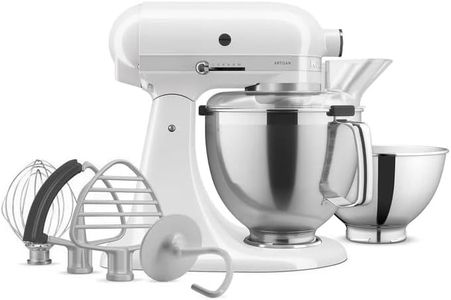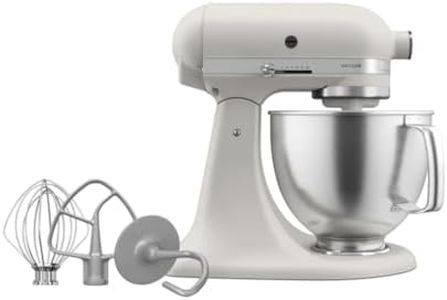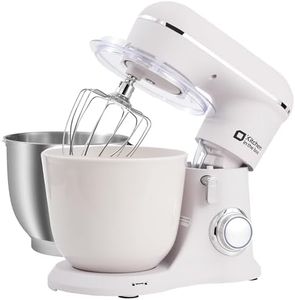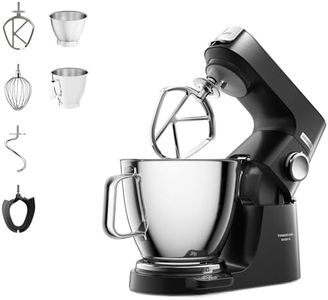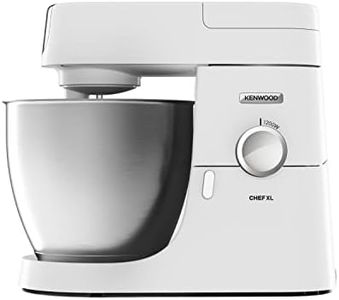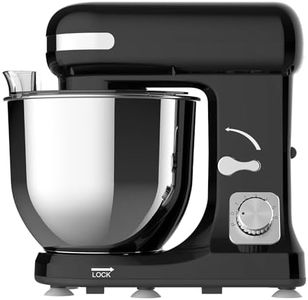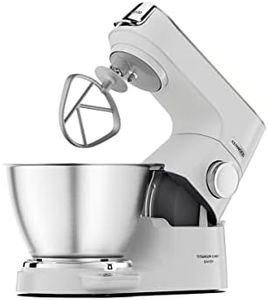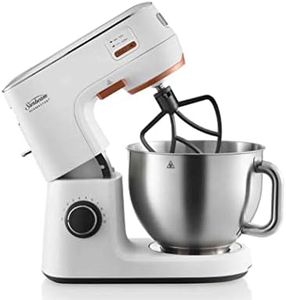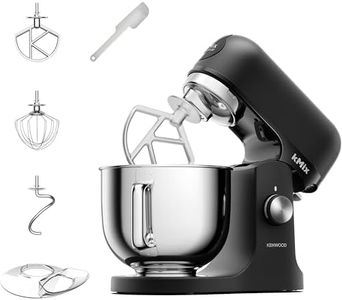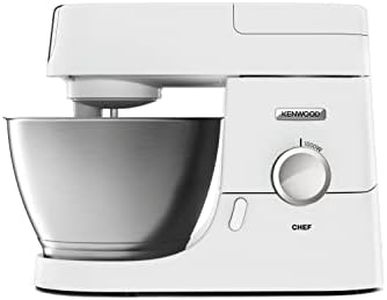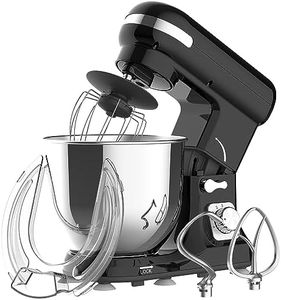We Use CookiesWe use cookies to enhance the security, performance,
functionality and for analytical and promotional activities. By continuing to browse this site you
are agreeing to our privacy policy
10 Best Dough Mixers
From leading brands and best sellers available on the web.Buying Guide for the Best Dough Mixers
Choosing the right dough mixer is crucial whether you're baking at home or managing a small bakery. The right mixer will save you time and ensure your dough is mixed consistently every time. Knowing the key specifications and what they mean for your specific needs will help you make an informed decision.CapacityCapacity refers to how much dough the mixer can handle at once, often measured in liters, quarts, or kilograms. This is important because using a mixer that's too small for your batches can lead to uneven mixing, while a mixer that's too large may not properly combine small batches. For occasional home use or small batches, a lower capacity (5-8 liters or equivalent) is sufficient. For regular baking or larger amounts, medium capacities (10-20 liters) are ideal, while for commercial or bakery use, capacities above 20 liters make sense. Consider how much dough you usually make to choose a capacity that matches your needs.
Mixing Speed/Speed SettingsMixing speed indicates how fast the dough hook or paddle rotates, usually provided in revolutions per minute (RPM) or as multiple speed settings. This matters because different doughs require different mixing speeds for the best results—slow speeds are better for combining and kneading, while faster speeds suit lighter mixes. Entry-level mixers often offer 1-3 speed settings, suitable for beginner use and basic recipes. Higher-end models can have several speeds (sometimes up to 10), giving more control for a variety of dough types. Choose a mixer with enough speed options to handle the types of dough you plan to make.
PowerPower is measured in watts and determines how effectively your mixer can handle dense or heavy doughs. Low power (under 400 watts) is usually suitable for lighter doughs like cake or certain pastries. Moderate power (400-800 watts) can handle most bread or pizza dough recipes at home. High power (over 800 watts) is best for frequent use with heavy or stiff doughs, and is typical in commercial settings. If you plan to make heavy-duty bread often, look for higher power to avoid overworking the motor.
Type of MixerThere are different types of dough mixers: stand mixers, spiral mixers, planetary mixers, and hand mixers. Stand mixers are versatile for home kitchens, while spiral and planetary mixers are common in bakeries and can handle larger, heavier batches. Hand mixers are portable, but usually not powerful enough for tough dough. Understanding your frequency of use and batch size will guide you—frequent bread bakers or small commercial operations should look at spiral or planetary options, while occasional home bakers will be pleased with a stand mixer.
Bowl MaterialBowls are generally made from stainless steel, glass, or sometimes plastic. Stainless steel is durable, resists scratching, and is common in higher-end and commercial mixers. Glass bowls are visually appealing and let you see contents, but can be heavier and more prone to breakage. Plastic is lightweight but can wear out faster and may retain odors. For frequent use or tough doughs, stainless steel is recommended, but for occasional and lighter use, glass or plastic may suffice.
Ease of CleaningThis considers how easy it is to keep the mixer clean, including whether parts are dishwasher-safe and how accessible the bowl and attachments are. A mixer that's hard to clean can deter you from using it regularly. Simple designs with fewer nooks and dishwasher-safe components make cleanup quick and easy. If you’ll be making sticky or varied doughs, prioritize a mixer with removable, easy-to-clean parts.
Attachments and AccessoriesAttachments like dough hooks, paddles, and whisks expand the versatility of your mixer. Some mixers come with multiple attachments or offer optional extras. If you plan to use the mixer for tasks beyond bread dough, such as whipping, beating, or pasta making, look for a model with included or compatible attachments. Match these to your recipe needs for the best experience.
